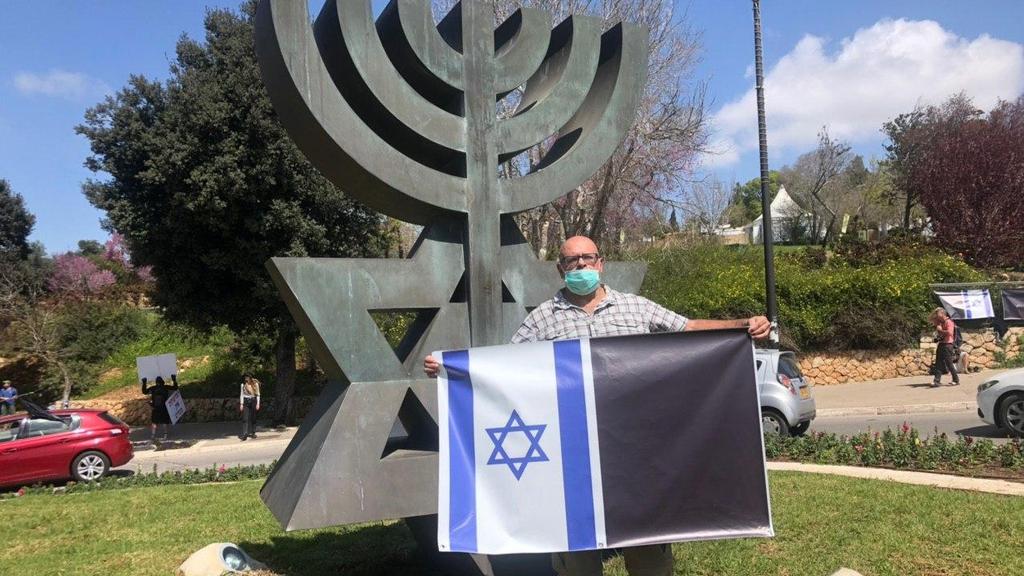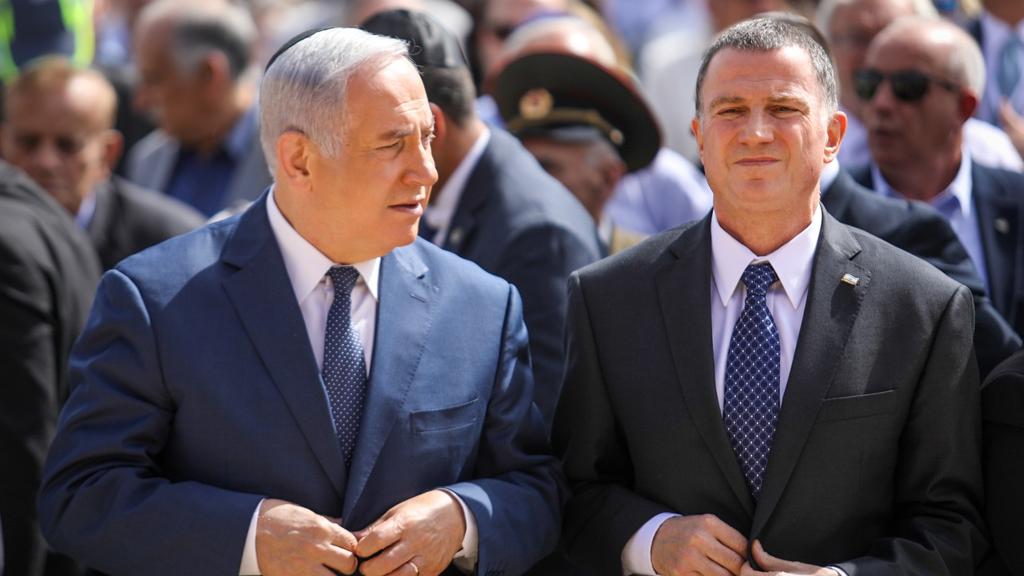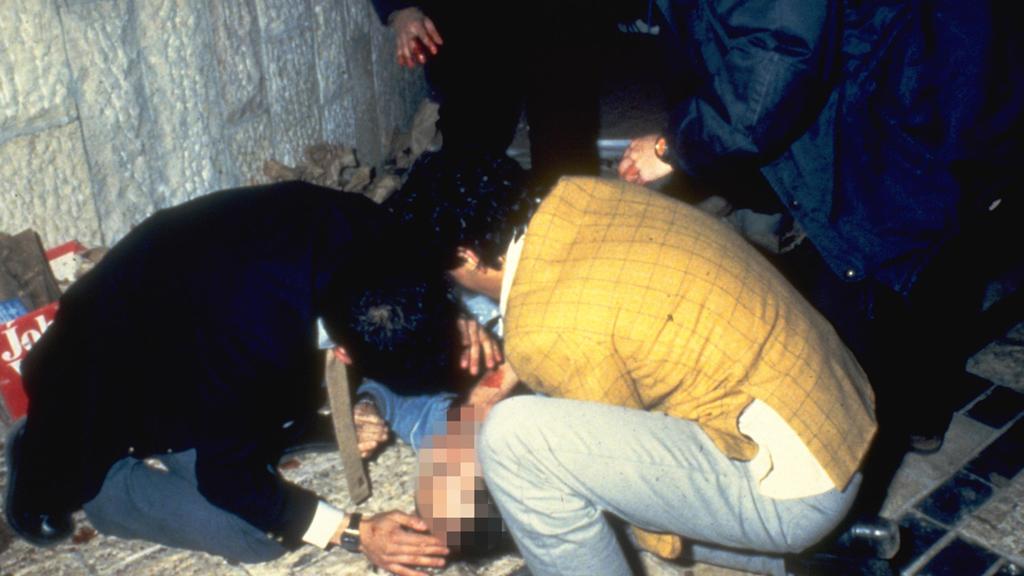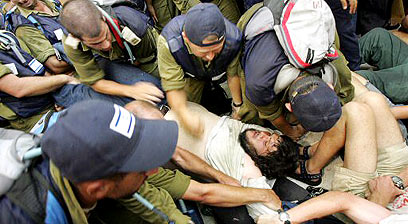As Israelis grapple with the two major events currently upon us - the coronavirus pandemic and the ongoing political stalemate - another major crisis is emerging.
As emotions run high the danger of violence increases. Anarchy might break out, with Israelis disregarding government directives and public unrest on a large scale or worse, we may see the eruption of a civil war.
4 View gallery


A demonstrator stands outside the Knesset to protest the political stalemate
(Photo: Gilad Cohen)
The threat is exacerbated by the continuously eroding public trust in the government and its leader and the growing extremism and deepening rift between the right-wing, religious bloc and the center-left and Arabs.
Political demonstrations have already begun, with the center-left Israelis protesting Prime Minister Benjamin Netanyahu's political maneuverings and his supporters, in turn, protesting the moves by the "anyone but Bibi" camp.
We can expect to see a rise in the level of violence in such demonstrations, deteriorating into increasing verbal and physical attacks and even the use of weapons.
Such incidents will put us firmly on the path to civil war.
4 View gallery


Prime Minister Benjamin Netanyahu and outgoing Knesset Speaker Yuli Edelstein
(Photo: Noam Moskovitz )
History warns us such a nightmare can easily be upon us. It was just 37 years ago when Peace Now activist Emil Grunzweig was murdered at an anti-government demonstration in Jerusalem.
In 1983, protesters marched against the First Lebanon War, demanding Prime Minister Menachem Begin to adopt the conclusions of the commission of inquiry into his government's policies and Israel's responsibility for the massacre perpetrated by the Christian militias in the Sabra and Shatila refugee camps in Beirut.
The demonstrators demanded the firing of then-defense minister Ariel Sharon who was found responsible for some of the war's mishaps.
A group of right-wingers congregated on the side of the road leading to the Prime Minister's Office. Among them was far-right activist Yona Avrushmi, who was holding a hand grenade acquired from a member of the IDF.
Avrushmi hurled the grenade into the crowd of demonstrators, killing Grünzweig and wounding seven others. Ironically, the wounded included Netanyahu ally Yuval Steinitz, who since then crossed the lines to become a vehement right-winger.
At his trial, Avrushmi claimed to have been affected by toxic incitement during his IDF service that suggested the left was preventing Begin and his government from winning the war.
Grunzweig's murder shocked people on both sides of the political divide. After initially blaming one another, both camps were careful not to compound the situation further, understanding Israeli society was on a slippery slope.
Still, the event indicates the speed and ease with which anger and frustration can turn to violence.
In our short history, we have come dangerously close to civil war a few times.
From the earliest days of Independence when the underground movements were dismantled and Irgun ship Altalena came under fire off the coast of Tel Aviv as it was carrying troops and arms for the militia, through the assassination of Prime Minister Yitzhak Rabin by a far-right activist at a 1995 peace rally, and during the withdrawal from the Gaza Strip settlements in 2005.
Basic unity among Israelis and the understanding that a compromise must be found, and the existence of external threats prevented further deterioration.
But now moderation and responsibility and unity have all been compromised.
The external enemy is a microscopic virus but those on the left see a real threat in the attacks on democracy and the rule of law that the right is perpetrating.
Both camps are entrenched in their positions, strengthened only by their mutual hatred.



